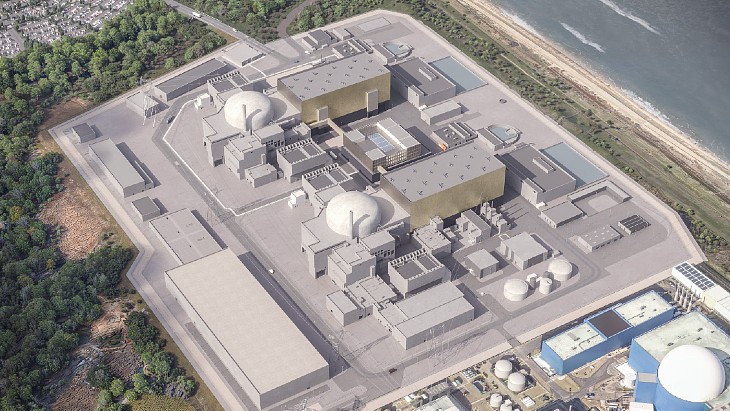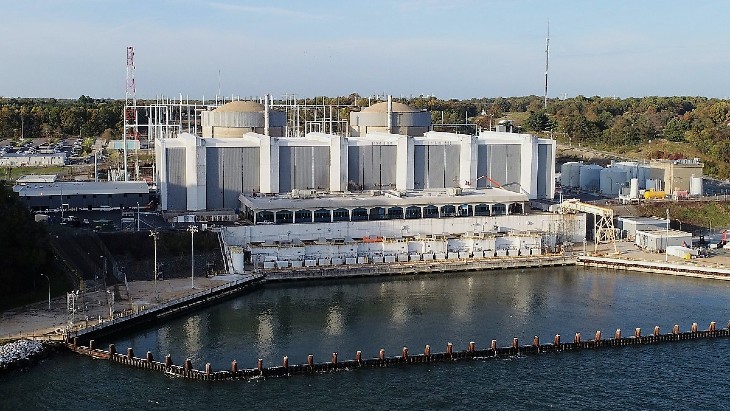The new paper - Future for Fusion Roadmap - warns that without changing its current approach to fusion, the UK faces losing out to the USA and China, countries who are investing billions to bring fusion to market in the 2030s, positioning themselves to dominate the sector. If the UK falls behind, it will miss out on the economic, strategic and technological advantages that come with leading the global fusion race, it says.
By combining First Light Fusion's innovative 'FLARE' approach with targeted regulatory reforms, the report argues the UK could reach commercial fusion well ahead of the government’s current 2040 target. This would enhance Britain's competitiveness against China and the USA not only in fusion itself, but also across the spin-off industries which would benefit from limitless clean energy, including defence, aerospace, and artificial intelligence.
First Light Fusion published a white paper in September this year outlining the Fusion via Low-power Assembly and Rapid Excitation (FLARE) approach. While the conventional inertial fusion energy (IFE) approach is to compress and heat the fuel at the same time to achieve ignition, FLARE splits this process into two: first compressing the fuel in a controlled and highly efficient manner and then using a separate process to ignite the compressed fuel, generating a massive surplus of energy, a concept known as 'fast ignition'. FLARE leverages more than 14 years of First Light Fusion's inertial fusion experience and its unique controlled-amplification technology, creating a system capable of reaching the high gain levels needed for cost competitive energy production. Gain - the ratio of energy output to energy input in a fusion reaction - is the critical metric determining commercial viability.
First Light Fusion and Stonehaven argue that incorporating inertial fusion energy into the UK's research and regulatory framework - alongside magnetic confinement fusion (MCF), which uses powerful magnetic fields to contain hot plasma for sustained fusion reactions - could dramatically shorten development timelines.
The UK government announced record GBP2.5 billion investment in fusion energy in 2024, primarily focused on magnetic confinement fusion through the STEP (Spherical Tokamak for Energy Production) programme.
"The policy landscape in the UK as it is currently will not allow the timely deployment of commercial fusion, via FLARE or any other method," Stonehaven said. "Vague regulatory frameworks, restrictive regulators that lack expertise and capacity, protracted planning laws and grid connection bottlenecks all mean that the UK risks ceding its position as the fusion world leader to China or the US."
The new paper calls for targeted regulatory reforms that can make the UK "the best place in the world to build fusion capability". It outlines the need for inertial fusion energy recognition alongside magnetic confinement fusion in the UK's Fusion Strategy, proper regulation that differentiates fusion from fission, and an emphasis placed on Britain's AI and experimental capability, which will showcase the country's fusion value chain to potential investors.
The paper also highlights the importance of collaboration across industry, academia and government. "Industry brings the capacity to innovate, manufacture, and scale reactor technologies; academia contributes vital research and talent to address scientific and engineering challenges; and government must provide the regulatory frameworks, investment, and long-term policy certainty necessary to de-risk private capital," it says.
"With the US and China both pushing for commercial fusion deployment in the 2030s, the UK could be left as a consumer - as opposed to a leader – in a sector that will define the future of energy if we fail to act quickly," First Light Fusion CEO Mark Thomas said. "Britain does hold a winning hand - we just need to play it. With simple yet urgent reforms, this country can become the best place in the world for fusion capabilities. By modernising regulation and recognising the potential of IFE through our unique FLARE approach, we can turn scientific leadership in strategic advantage - and ensure Britain's place at the heart of the global fusion economy."
Adam Bell, Director of Policy at Stonehaven, added: "There is a fusion race, and it is a race Britain can win. Thanks to our decades of research, we stand ready to lead the world in its deployment – if we can get our act together in time. We need to ensure people who want to build fusion reactors in the UK can do so in confidence that they will be allowed to do so. If we don't, we'll see our lead and our expertise go overseas. Britain needs to be the easiest place in the world to build a fusion reactor."
First Light Fusion was founded by Yiannis Ventikos of the Mechanical Engineering Department at University College, London, and Nicholas Hawker, formerly an engineering lecturer at Lady Margaret Hall, Oxford. The company was spun out from the University of Oxford in July 2011, with seed capital from IP Group plc, Parkwalk Advisors Ltd and private investors. Invesco and OSI provided follow-on capital.
In February, Oxfordshire-based First Light Fusion announced it will focus on commercial partnerships with other fusion companies who want to use its amplifier technology, as well as with non-fusion applications such as NASA seeking to replicate potential high-velocity impacts in space. By dropping its plans for a fusion power plant, and instead targeting commercial partnerships with others, it aims to "capitalise on the huge inertial fusion energy market opportunities enabling earlier revenues and lowering the long-term funding requirement".

_31707.jpg)



_42372.jpg)
_37521_70699.jpg)


_76087_55556.jpg)



